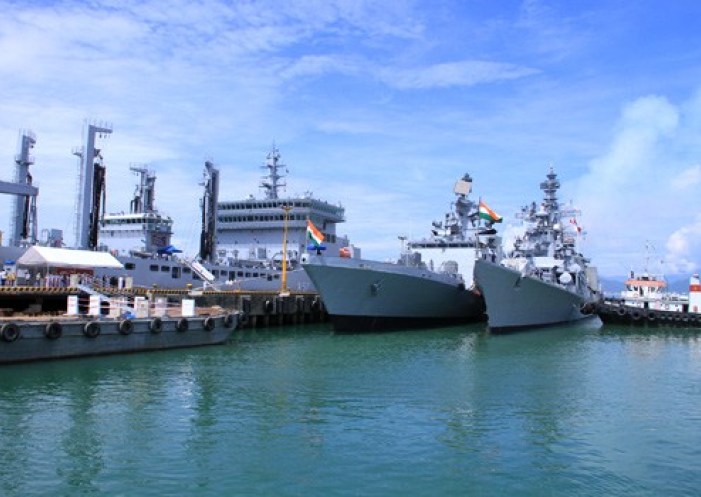By virtue of being a peninsular country, India occupies a very strategic place in Asia. Not only does it boast important trade routes but is also substantially responsible for naval defence in the Indian Ocean. In this regard, India has maintained friendly diplomatic relations with countries along the Indian Ocean, establishing its role as the net security provider.
Deepening its defence and strategic ties further, India had recently conducted a bilateral exercise, AUSINDEX 19, which saw the largest Australian defence joint task force till now, visiting India. It was the third installment of such a bilateral exercise. Australia’s High Commissioner to India Harinder Sidhu said that the exercise is part of the strong and growing Australia-India strategic partnership. She stated, “Australia and India are working together to promote peace and prosperity based on our shared values and interests in a stable, secure, rules-based and inclusive Indo-Pacific. Australia clearly sees India in the top tier of our international relationships. With both countries having extensive maritime zones in the Indian Ocean and significant maritime capabilities, it makes sense for Australia and India to do more together to ensure the Indian Ocean remains free, open and inclusive.”
The exercise saw more than 1,000 Australian Defence Force personnel working together with their Indian counterparts on naval manoeuvres and military training activities.
Just a few days after the conclusion of the third bilateral exercise with Australia, India witnessed a strategic naval exercise with Vietnam. India and Vietnam had undertaken a four-day long maritime exercise off the Cam Ranh Bay in Vietnam; starting on April 13th. This has been viewed as a significant step in strengthening mutual confidence and interoperability as well as sharing best practices between the Indian and Vietnam navies. The two countries have also signed an agreement to exchange white shipping information and have a running “information sharing” programme.
“The exercise was undertaken as a part of the ongoing overseas deployment of Eastern Fleet ships to South-East Asian countries,” the Navy said. It also stated that the exercise included submarine, aviation and dockyard training.
The Indian Navy and Vietnam Peoples Navy have traditionally shared good relations and the conduct of this bilateral exercise would give a further add to the existing strong bilateral relations.
These bilateral exercises with friendly nations add to the impact the regular exercises the army and air force hold with the armed forces of other nations. Moreover, the naval diplomatic relations have specially strengthened in the past 2 years wherein India has been acting energetically towards its “Act East” and Indo-Pacific policies.
Indian warships have always maintained their stance against anti-piracy and have extended a helping hand to the other nations. In this regards, they have visited the Persian Gulf, the Gulf of Aden, Seychelles and the Maldives. The warships have also offered humanitarian assistance to Mozambique after it was ravaged by Cyclone Idai. The Indian naval ships were among the first responders, delivering rice and medicines; taking part in the relief operations.
An official of the Indian foreign ministry stated on this, “What this does is to establish India’s credentials as a net security provider in the Indo-Pacific region. The message that is conveyed (by the Indian Navy) is: ‘we are out there, present to provide the help that is required and we are also there to provide security to shipping lanes in the region,” said the person recalling instances of pirates hijacking commercial vessels off the Somalia coast a decade ago. “That situation (of rampant piracy) does not exist any more.” The official continued by stating that the presence of Indian Navy ships underlines, “India’s vision of Security and Growth for All in the Region (SAGAR) and assures order in the maritime domain besides solidarity with friendly countries.”
In furtherance to India’s “Act East” policy, other countries seem to be responding favourably. Amid Naval chief Sunil Lamba’s visit to Thailand this week, reports have come from Bangkok considering the construction of the Kra Canal that could provide an alternative to the overcrowded Malacca Straits, which is seen as the world’s busiest maritime lane. The construction of the canal would lead traffic moving past India’s Andaman and Nicobar Islands, which are home to India’s strategic tri-service command.
Indian Navy is performing tremendously; whether it’s regarding frontier protection or maintaining diplomatic relations with other countries. The Indian Ocean is a vast uncharted territory, and having the nations working together, united without emphasis on geographical differences works well for all the people residing in the Indo-Pacific region.
